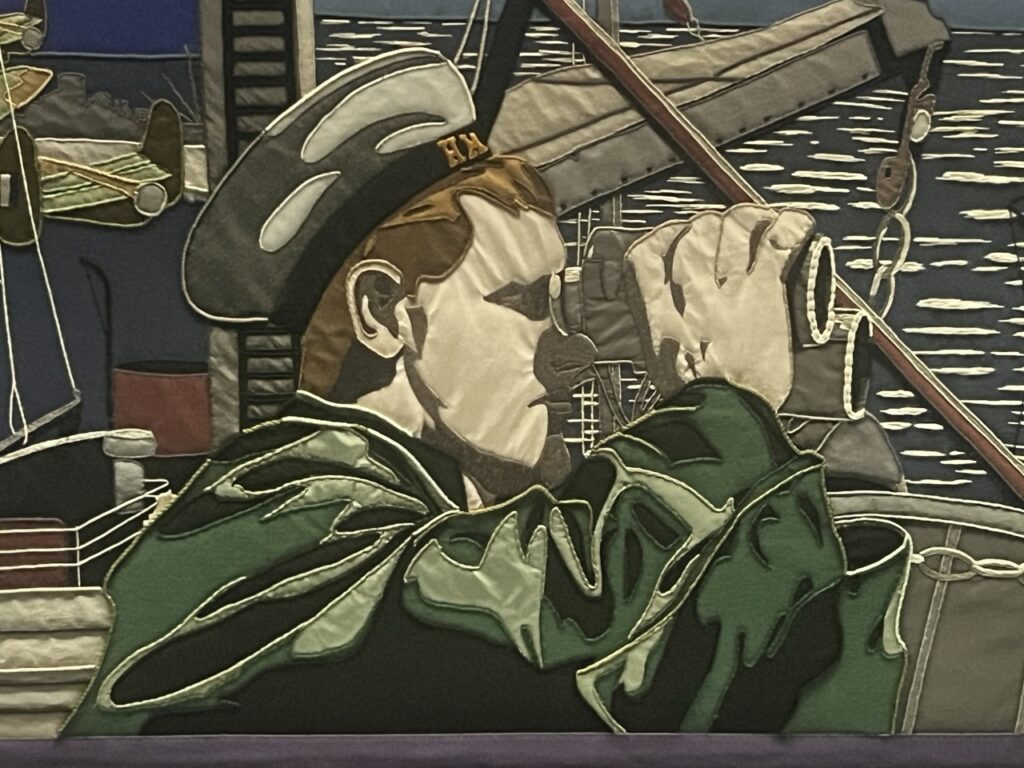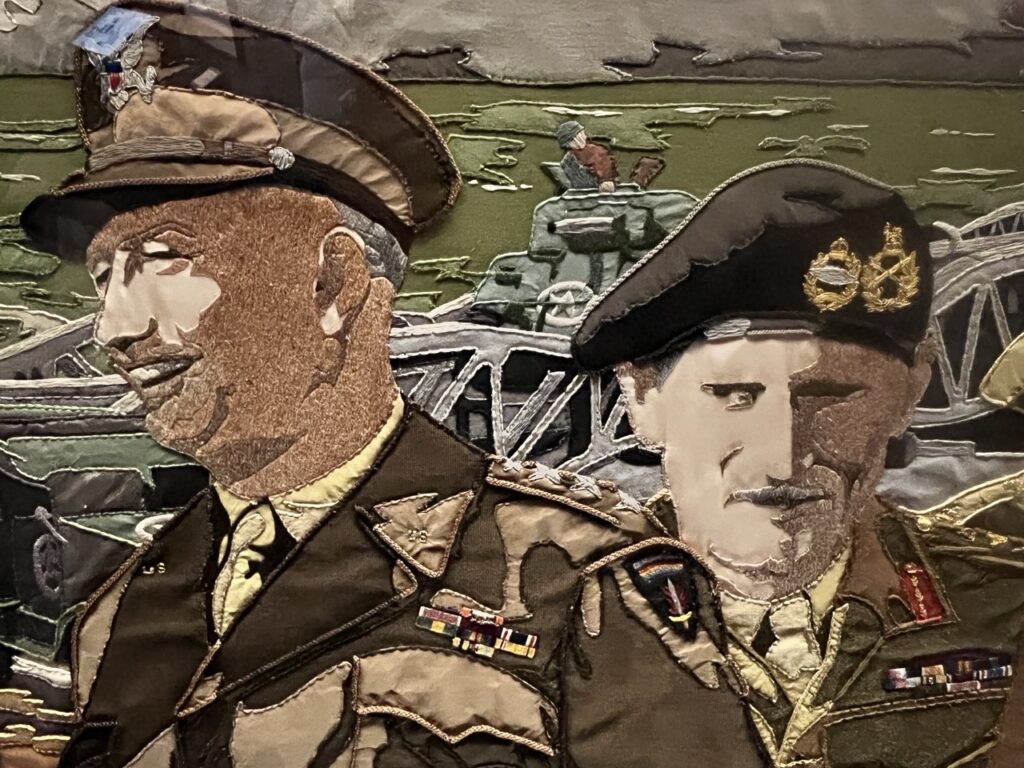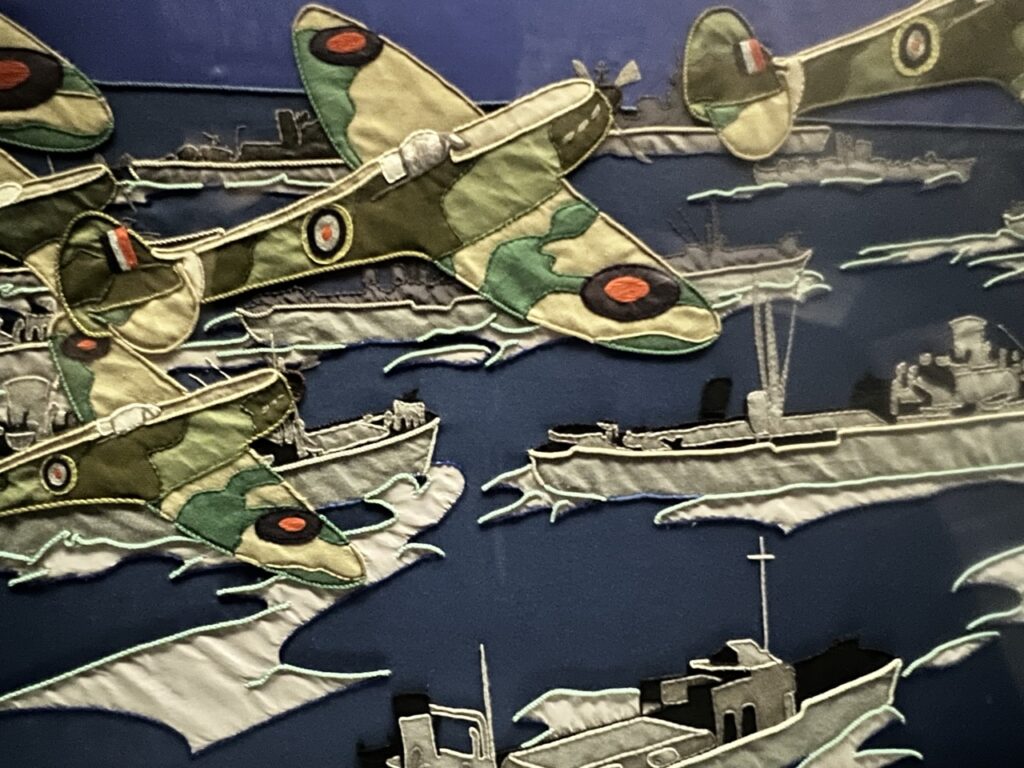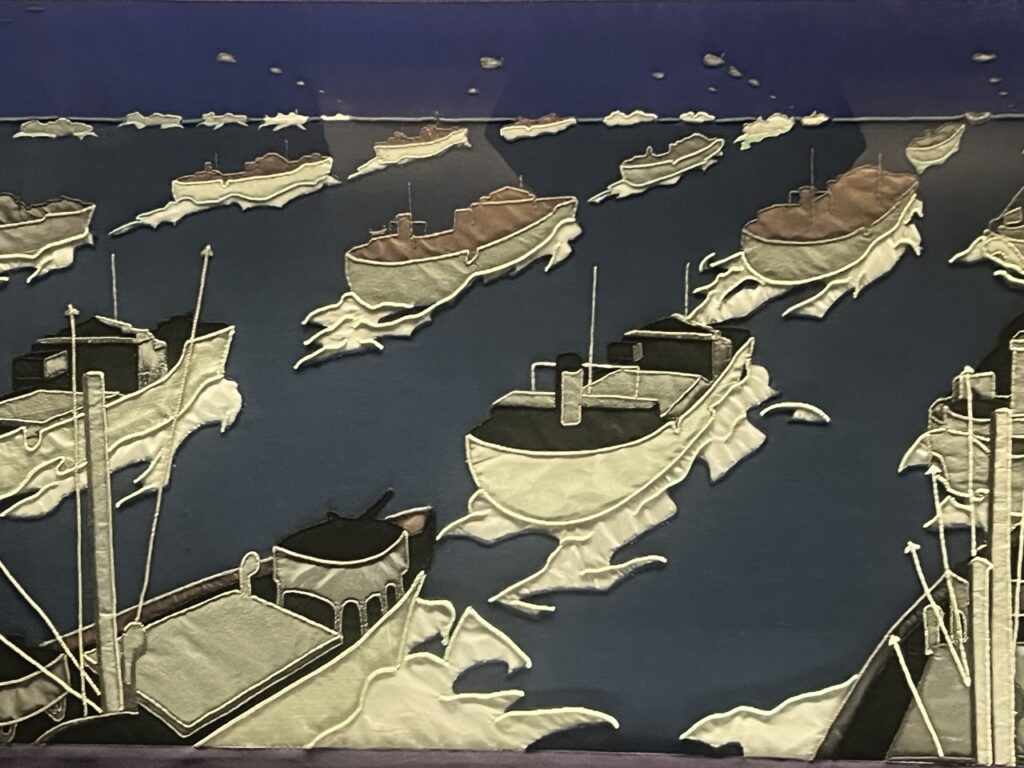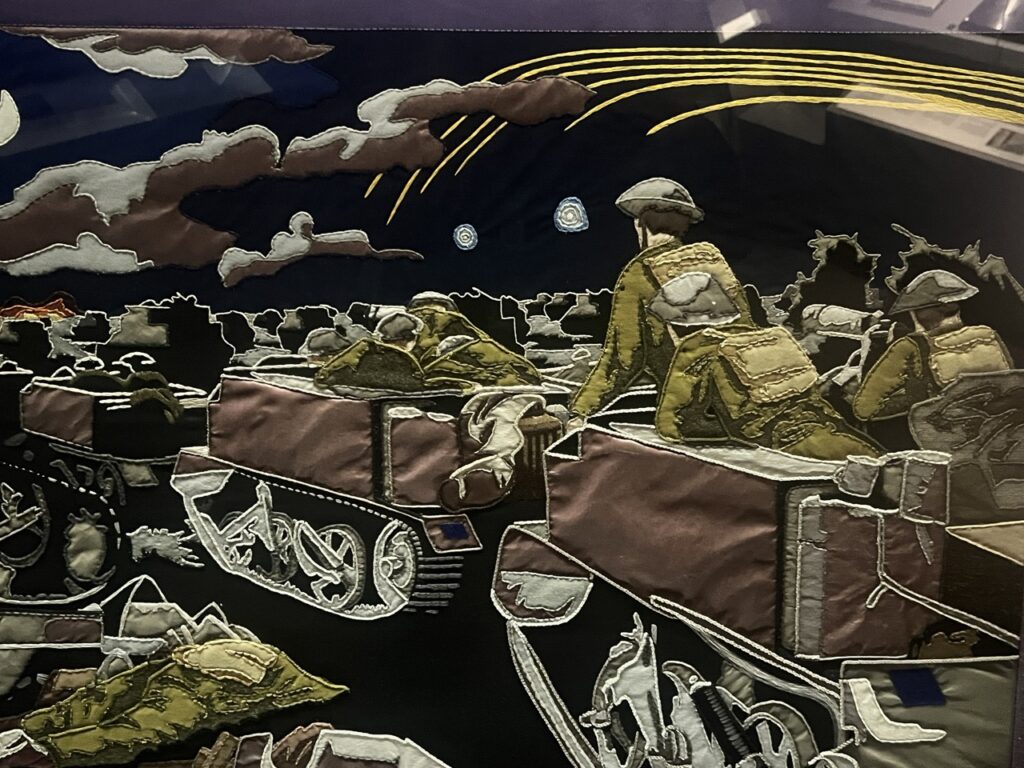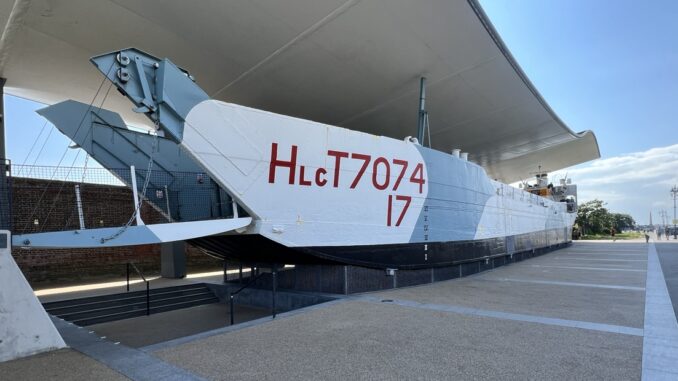
Portsmouth’s D Day Story is a small museum on the seafront a literal stone’s throw from the Tudor castle at Southsea (where Henry VIII watched his magnificent warship The Mary Rose turn sharply during the Battle of the Solent and then sink beneath the waves).
It’s a compact place that tells the tale of 6 June 1944 and its aftermath through some intelligent displays and models, and with fascinating artefacts and photographs.
It also has two unique exhibits – the Overlord Tapestry and LCT7074.
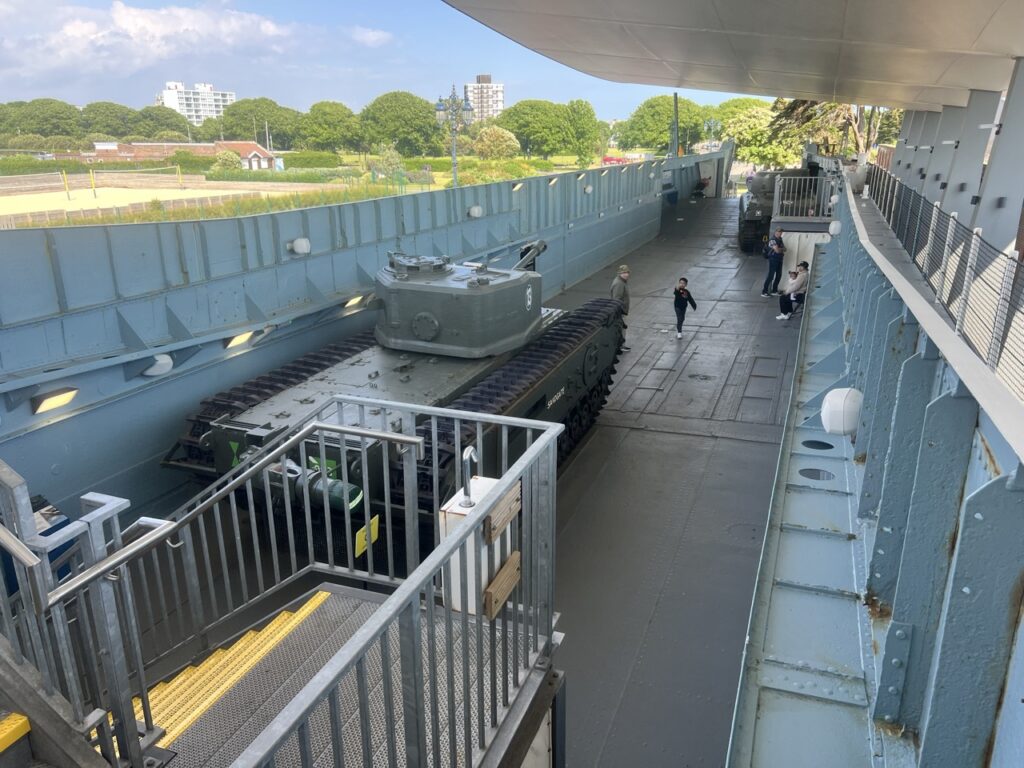
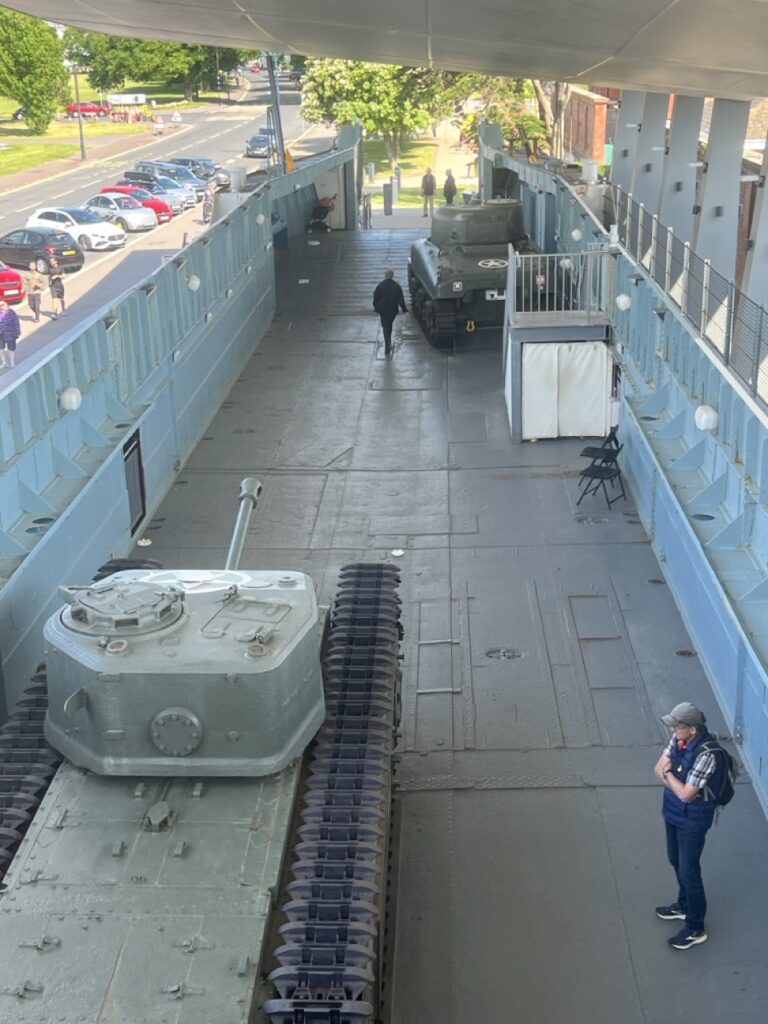
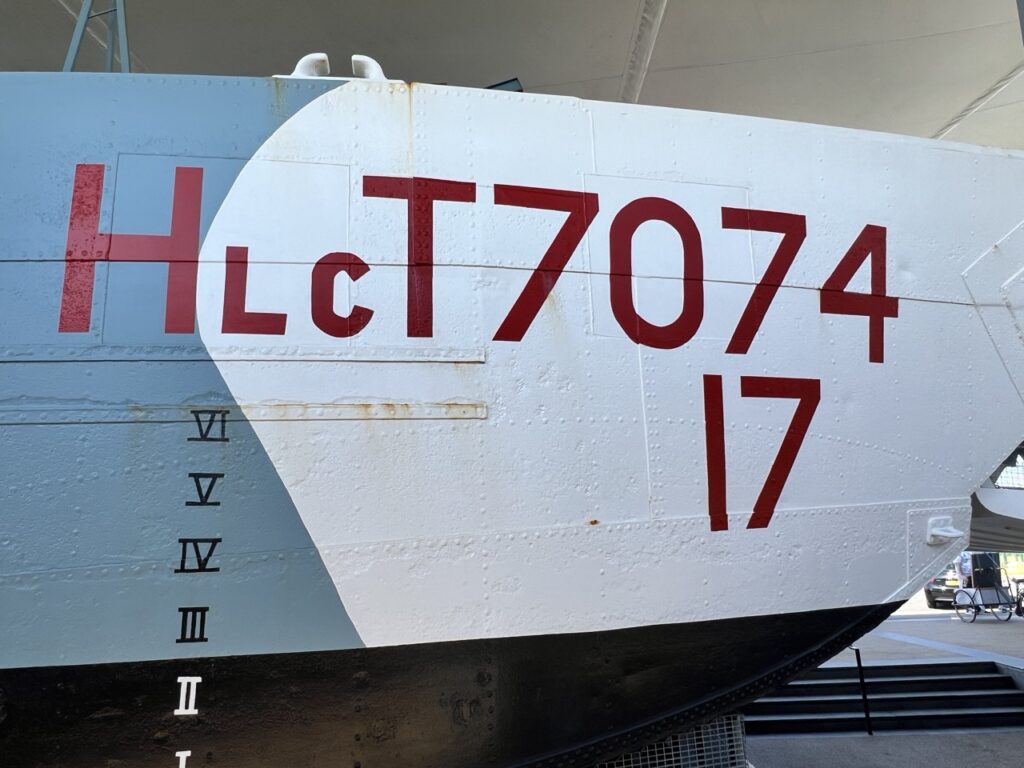
LCT7074 – ‘Landing Craft Tank’ – is the sole survivor of over 800 such craft built to land tanks and other vehicles on the Normandy beaches. Launched in April 1944 at Hebburn near Newcastle, it was part of the vast armada for the invasion of occupied Europe: over 4,000 landing craft of various sizes that were to transport hundreds of thousands of men, machines, supplies, fuel and more on 6 June and the following days.
On 2 June this LCT embarked ten tanks from the 7th Armoured Division (‘the Desert Rats’) at Felixstowe and set sail for Normandy on 5 June, landing their load onto Gold beach near Asnelles-sur-mer on the morning of D Day +1.
It then spent the next eight months shuttling to and fro across the channel, supporting Overlord and the onward push into Germany.
Post war LCT7074 went to Liverpool, where it became the clubhouse for the Merseyside Master Mariners, subsequently being converted into a floating nightclub, before being abandoned and sinking at its moorings in Birkenhead in 2010.
After being submerged for four years, a multi-million pound restoration was undertaken with LCT7074 being returned to its D Day layout and paint job, and then being transferred to Southsea in August 2020.
And this is where – now onshore, rather than on the water – one can go aboard, one’s shoes echoing in the metal loading space. The museum does do guided tours, but it is fine to ‘self guide’ and marvel at the cramped conditions for the craft’s crew and the crews of the tanks. These flat-bottomed vessels were bounced around by the waves, and sea-sickness cursed most of the invasion force as they moved through the heavy seas in the channel.
Like the Fighter Command HQ at Uxbridge, or Bletchley Park, or even the Churchill War Rooms, being on LCT7074 allows one to be at a place where WW2 actually happened, and to try to imagine how the young men about to land might have felt.
The other unique exhibit could not be more different from the steel and rivets of the landing craft. This is the Overlord Embroidery, 34 panels and 83 linear metres that illustrate the story of the D Day enterprise.
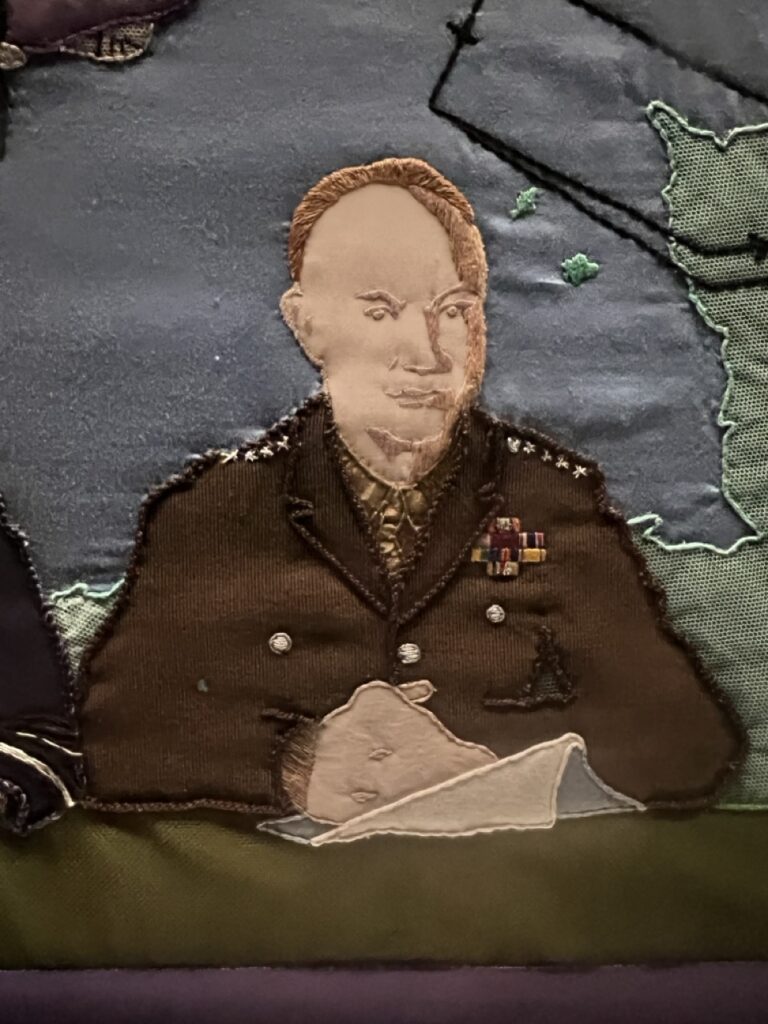
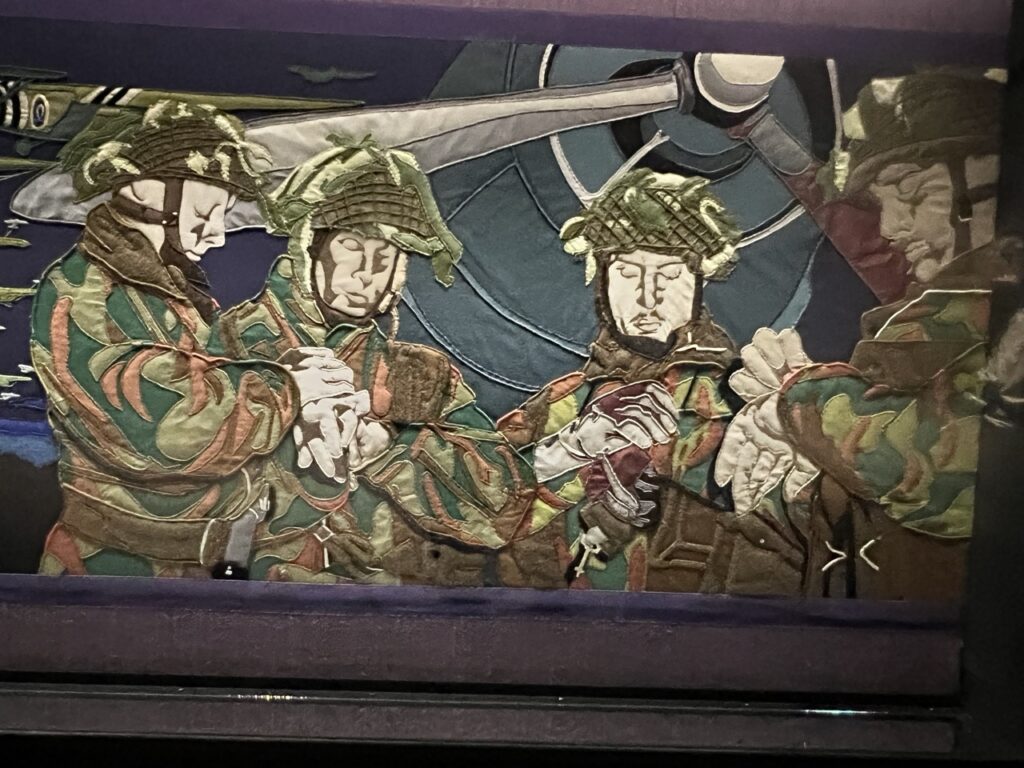
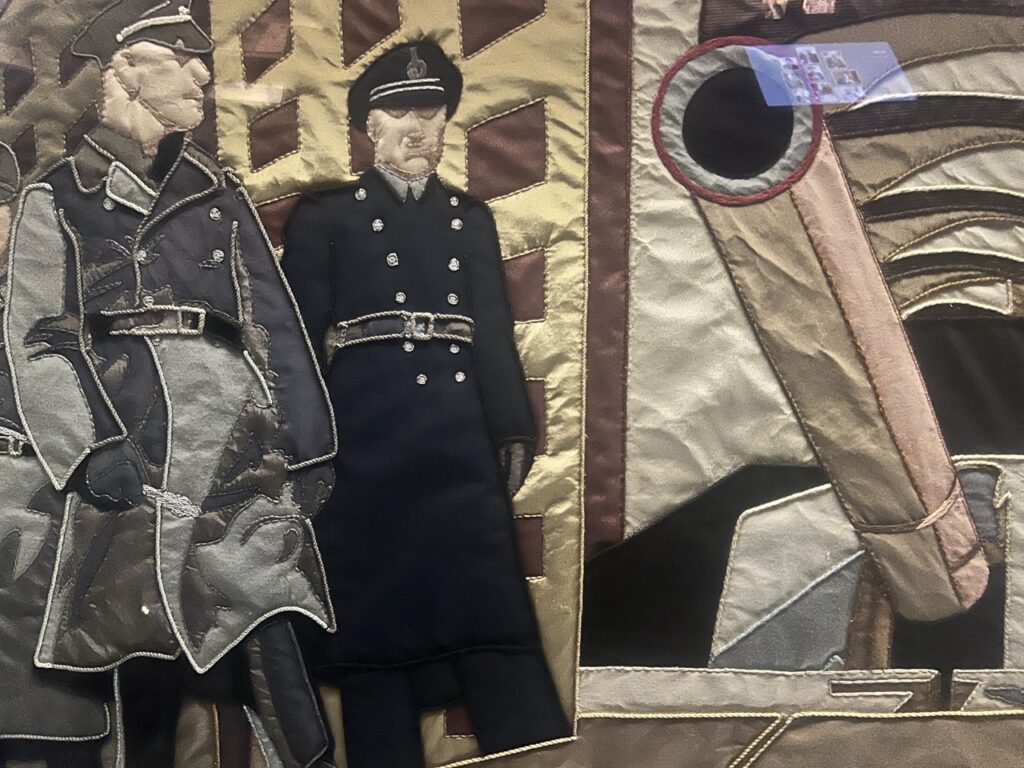
A conscious echo of the 11th century Bayeux Tapestry that commemorated William the Conqueror’s invasion of England from Normandy, the Embroidery was commissioned by Lord Dulverton and designed by the artist Sandra Lawrence.
It took five years to sew, and was stitched by a team of 25 women from the Royal School of Needlework. The last panel was finished in 1974.
It uses the ‘applique’ technique, sewing pieces of other fabric onto the background panels; over 50 different fabrics were used, including actual wartime uniforms. Embroidery stitches were then added to give more details and to create really quite lifelike images.
The D Day Story is a wee bit of a hike (about 2 miles) from the Historic Dockyards in Portsmouth (home to inter alia Nelson’s Victory, HMS Warrior, the Mary Rose), but I’d say that no trip to the city should omit a visit – and you can also clamber through Southsea Castle at the same time.

